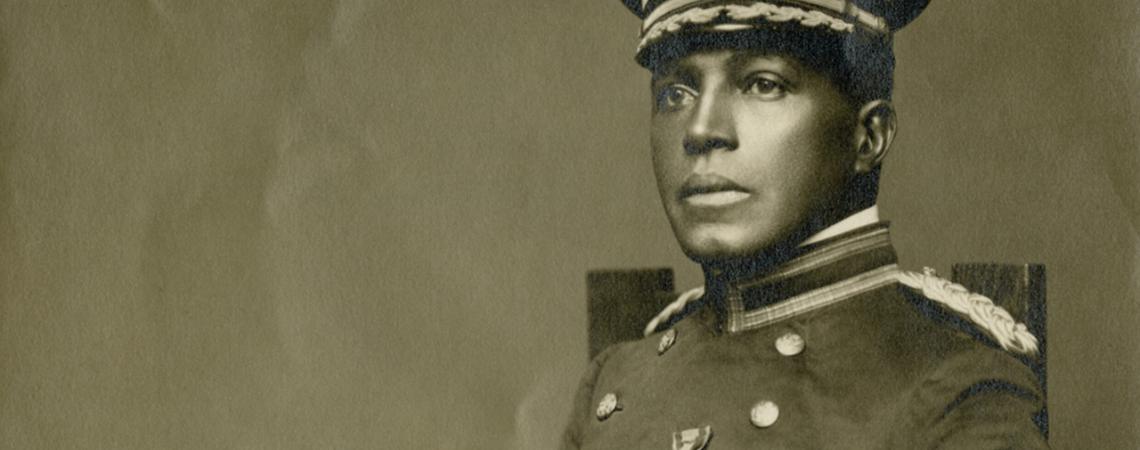Historic photo courtesy of the National Afro-American Museum and Cultural Center
Charles Young was born into slavery in Mays Lick, Kentucky, in the time just after Abraham Lincoln delivered the Emancipation Proclamation and just before the ratification of the 13th Amendment, which abolished slavery.
His parents, technically still considered runaway slaves, carried him as an infant across the Ohio River to the freedom granted them when his father enlisted in the Union Army.
Thus began what was to become a remarkable life — and that life is chronicled and memorialized at “Youngsholm,” Young’s adulthood home in Wilberforce, just outside Xenia in southwest Ohio.
First established as a National Historic Landmark in 1974, the house and land surrounding it is now Ohio’s first national monument: the Charles Young Buffalo Soldiers National Monument, established by proclamation of then-President Barack Obama on March 25, 2013.
Harold Warren Jr., a Wilberforce resident who also served in the Buffalo Soldiers, talked about what the monument means for a documentary by the StoryCorps historic preservation project last year: “To have that monument placed in the national park system was unbelievable,” Warren tells his son in the video. “It will be a boon to this area — a tourist attraction and a historical event that could never be matched by any other means.”
The monument, still in the early stages of development, is a worthy stop on America’s history trail — especially during Black History Month in February.
A brick house with polished wood floors and stained-glass windows, the monument gives an indication of the stature of Young’s accomplishments as the highest-ranking black officer in the Regular Army until his death in 1922.
National Park Service staff take visitors on a trip through Young’s life. Each interpretive panel of photos and text testifies to Young’s fortitude. Among the highlights:
Young’s acceptance and appointment to the U.S. Military Academy at West Point, where in 1889 — despite rampant racism and social isolation — he became the third African-American to graduate. It would be 47 years before another succeeded.
He was assigned to command the famed Buffalo Soldiers — black cavalry troops who served in the Indian Wars after the Civil War and so nicknamed by the native American warriors they fought against. He spent the majority of his military career serving in those regiments.
In 1903, Young became the first African American national park superintendent when he was assigned to protect Sequoia and General Grant (now Kings Canyon) National Parks. Several of the roads and park trails still in use can be credited to Young and the Buffalo Soldiers he commanded.
Starting in 1894, Young taught military science and tactics at Wilberforce University, between military stints that included serving as a captain in the Philippine American War; as military attaché in Haiti, the Dominican Republic, and Liberia; and as a major leading the U.S. 10th Calvary against Pancho Villa in Mexico. His home became his refuge where he recharged with his wife, two children, and friends such as W.E.B. Dubois and poet Paul Laurence Dunbar. The house was a center of social life for students and faculty as well.
In 1917, Young was promoted to colonel, but racism still dogged him. He was denied the rank of general at the start of World War I and forced to retire, a decision he fought and eventually got overturned.
After the war, on assignment to Nigeria, Young died of a kidney infection. He is buried in Arlington National Cemetery, where his was one of only a handful of funerals to be held in the cemetery’s amphitheater.









